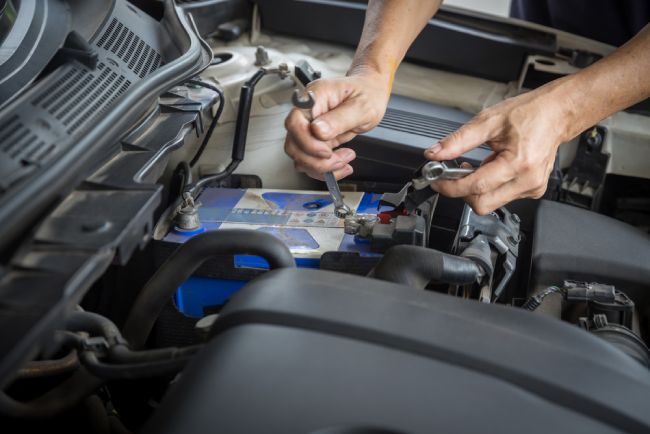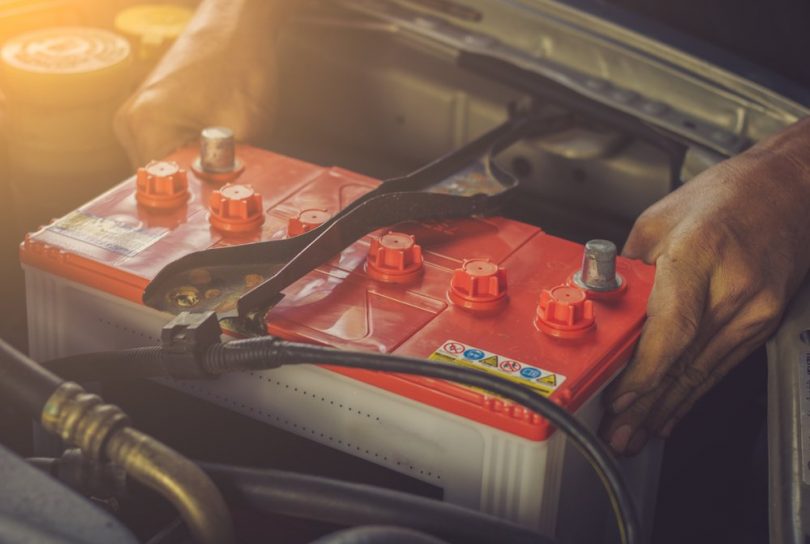With more people working from home and the high gas price, cars are sitting for long periods without use. While this is great for your wallet, it is not so good for the battery.
Here we will look at how long a car can sit before the battery dies, why the battery dies when not used, and what to do to keep the battery charged.
How Long Can a Car Sit Before the Battery Dies?

If you are talking about old models, it would take around two weeks for the idle battery to finally dry out. Usually, the newer models can sit for about a month but their batteries may still die early if the weather is really cold outside.
How often you drive, the age of the battery, and the weather all affect the life of the battery. Extreme heat and cold deplete the battery quicker than moderate temperatures.
Why your battery dies when not in use?
Your battery produces electricity through a complex chemical reaction. Even when the car is parked, a chemical reaction occurs.
Your car alarm, the clock on your dashboard, and the radio cause a parasitic drain (use of the battery’s electricity while the car is parked.) While the battery can sustain this overnight, these slow, steady energy drains will eventually cause the battery to die.
When you drive the car, the alternator recharges the battery while maintaining the power needed to run the car’s accessories like the radio, a cellphone, heat, or air conditioning.
If you aren’t driving, the battery supports the parasitic drain without replenishing the charges needed to keep the battery alive.
Idling vs driving: What you need to know
Idling the car for 15 – 20 minutes will not charge the battery because you need to engage the alternator to charge the battery.
Idling the vehicle instead of driving hurts the battery more than it helps. While the alternator keeps the battery charged, it does not recharge a low battery.
Driving the car engages the alternator, so the battery has the charge to run the accessories while driving and parking.
Not charging the battery properly can lower the battery’s life from five to seven years down to three to five years. That is a significant loss in battery life and a costly loss at that.
Driving the car to charge the battery
Driving the vehicle for short distances of 10 to 20 minutes isn’t better than idling the car.
Short trips still shorten the battery life because the alternator needs a longer drive time to do its job sufficiently.
To maintain the battery’s charge, you must drive the car every 3 or 4 days because the battery requires 1000 plus RPMs to start the charging process. This means you need to drive at least 6.5 miles.
But in the heat and cold when using air conditioning or heat and the defroster, you need to drive longer as these accessories use the battery while driving.
How to keep the battery charged?
1. Driving
Driving is the easiest way to keep the vehicle charged. No matter the weather, a 10-mile drive every three to four days will maintain the battery’s charge all year round.
While it is not always convenient, you won’t have to disconnect the battery or use a maintainer.
2. Disconnecting the battery
You can disconnect the negative battery cable and halt the power drain to stop the electrical system from using the battery.
Removing the negative battery cable works well for cars that aren’t driven a lot or if you are storing a vehicle in the winter. Just don’t forget to reattach the cable before trying to start the car.
To disconnect the negative cable loosen the bolt on the negative (-/black) terminal and pull the cable off the terminal. Make sure the loose cable is not touching the car or engine.
3. Removing the battery
If you don’t plan on driving the car for a month and a half to six months, remove the battery and charge it at the three-month mark.
Recharging the battery at regular intervals while it is stored will keep it working at its best.
How to remove the battery?
Tools
- Wrench
- Screwdriver
- Rag or cloth
- Pliers
Step 1:
The negative battery terminal has a black cover in the cable or a – sign. Once you locate it, loosen the bolt holding the cable to the terminal with a wrench and pliers.
Step 2:
Remove the positive cable using step #1. Ensure that the positive and negative cables NEVER touch. To prevent electrical damage to the components, DO NOT let the positive cable touch the metal on the vehicle.
Step 3:
Some cars have a bracket to hold the battery. If your vehicle has one, you must remove the bolts/screws that hold the battery in using the wrench, pliers, or screwdriver place before taking the battery out.
Step 4:
The battery weighs close to forty pounds. You may need help lifting it. Once you remove the bracket bolts, you can raise the battery out of the vehicle by pulling it straight up.
Step 5:
If you don’t have a battery box, you will need a dry place to store the battery with a temperature between 40 and 50 degrees.
When to use a battery maintainer?
A battery maintainer trickle charges your battery while it is in the car. It sends small charges that keep the battery charged.
When the battery charge is complete, the maintainer shuts off (so the battery doesn’t overcharge.) You can purchase them with electric or solar power.
Some cars with Lithium-Ion batteries have a battery maintainer system (BMS) built-in. These batteries do not need an external maintainer.
Battery maintainers should only be used on Lithium-Ion batteries that do not have BMS.
How to use a battery maintainer?
Tools
- Pliers
- Wrench
- Screwdriver
- Battery maintainer
Step 1:
Park the car in a well-ventilated area that is dry. The hydrogen gases caused by the charging can build up and cause a possible explosion. Venting the area will eliminate this danger.
Step 2:
Make sure the keys are not in the ignition and the car is off. The maintainer must be unplugged.
Step 3:
To safely charge the battery, never use the negative terminal. Find a clean, dry spot on the vehicle’s frame, the engine block, or a chassis bolt, and attach the charger’s negative terminal to this area.
Step 4:
The maintainer has one positive (red) and a negative (black) clip. Clip the red one onto the positive battery terminal and the black one on the ground spot you found in step # 3, making sure it is well attached.
Be careful the wires do not touch. They are electrified and will shock you!
Step 5:
Before plugging in the charger, check your owner’s manual for the settings to charge your battery. Then plug in the maintainer, turning it to ON.
Check the amp meter on the charger because dead batteries read higher, whereas fully charged batteries read closer to zero.
If the battery reads fully charged, you may not have a good ground connect. You’ll want to unplug the maintainer and reconnect it to ensure the reading is correct.
Step 6:
Once you reconnect the battery, check the display on the maintainer to be sure the battery is charging.
After giving the charger a few minutes to start, if the battery is NOT charging, your battery may be too dead to charge.
Step 7:
If the battery is charging, let it continue to charge. Check the manual for the maintainer to see if it can be left on indefinitely or needs removing after a few days.
Use that guideline to remove the charger as the instructions dictate.










Leave a Comment